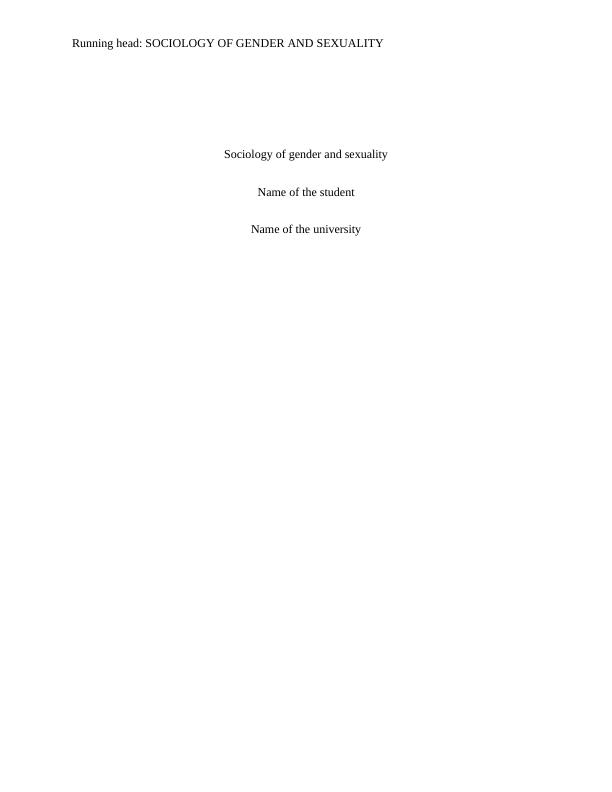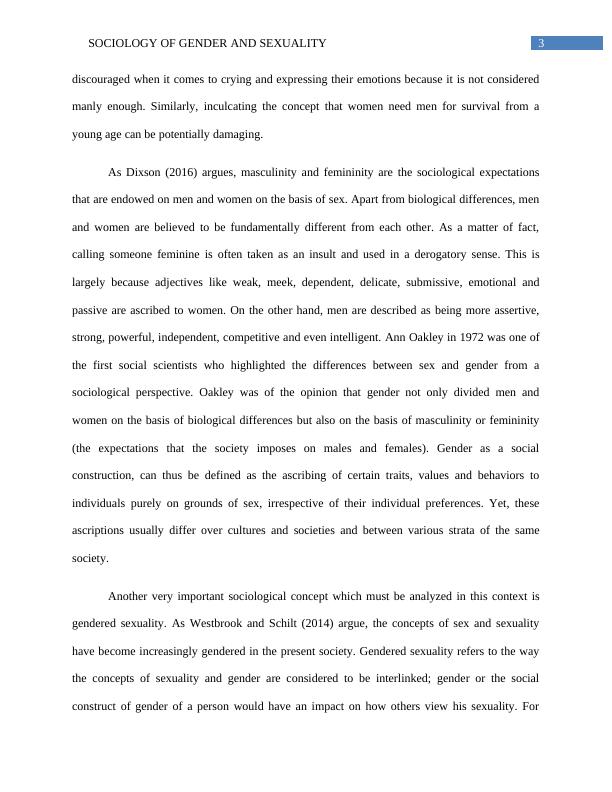Sociology of Gender and Sexuality
11 Pages1932 Words458 Views
Added on 2023-06-03
About This Document
The study of sociology offers a distinct viewpoint on the concepts of sexuality and gender and how they affect an individual’s position in society. The terms sex and gender are often considered to be similar in meaning and are thus usually used interchangeably in common parlance. However, it must be realized that the two terms or concepts in sociology are vastly different, with one having biological connotations and the other being related to the cultural factors attributed to biology.
Sociology of Gender and Sexuality
Added on 2023-06-03
ShareRelated Documents
End of preview
Want to access all the pages? Upload your documents or become a member.
Sociological Perspectives on Gender and Sexuality: Everyday Experiences and Issues
|10
|3423
|99
Sexual Discrimination in Nursing Schools
|5
|1109
|273
Gender and Clothing Are Linked Phenomena
|8
|2241
|404
Equality in Sports: A Transgender Perspective Discussion 2022
|11
|2571
|25
Overview of Photojounalism Assignment
|4
|662
|18
Gender Sexuality and Society
|8
|3147
|69




